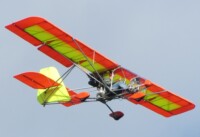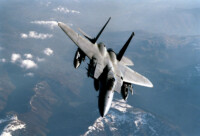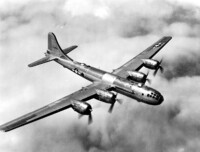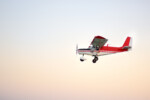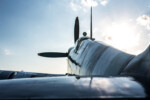18 Different Types of Airplanes and What Makes Them Unique
29 December 2021 | Updated on February 05, 2024
Since the beginning of time, the desire to soar across the skies in complete freedom from earthly limitations has been a human desire. And before the Wright brothers made the first successful powered flight in 1903, only through their vivid imaginations were men able to rise to the level of gods and angels and conquer the infinite skies above.
Although Leonardo da Vinci researched principles of flight and drew complicated flying objects, it was not until 1886 that a Frenchman, Clement Ader built the first powered aircraft. It was a steam-powered airplane that managed to rise to 50 meters. It was not an impressive feat because the balloons and dirigibles of the era could climb to much higher altitudes.
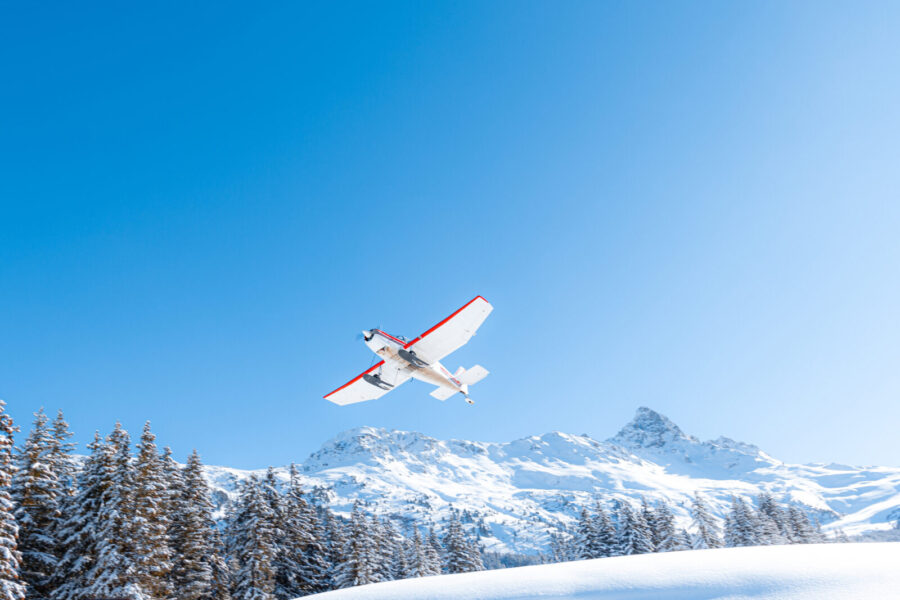

However, a mere century later. Thousands of airplanes with cutting-edge design and technology fly hundreds of passengers across the globe each day at speeds once thought to be too dangerous for humans. Men had indeed conquered the skies. Apart from making global travel more accessible, airplanes are helpful in numerous ways. They provide isolated communities with an essential lifeline to the outside world, help organizations around the globe improve their service delivery, and help protect a nation against territorial adversaries by being effective weapons of death and destruction.
We have developed a practical guide on the various types of modern airplanes, from small passenger airplanes to large military transports, and why they are different. So relax, put those aching feet somewhere comfortable, and read about your favorite aircraft, their purpose, capabilities, and unique features.
The Different Types of Airplanes
If you take a trip to your local airport, you will be amazed at the different types of airplanes taking off and landing every minute. All these types of aircraft range from the tiny single-engine Cessna’s the size of a large family car to large wide-body commercial airliners with wings the size of football fields, which are controlled by the same principles of flight. Namely: thrust, lift, drag, and weight.
Different types of aircraft models are designed to perform various functions. And these functions determine the particular category that each airplane type belongs. For example, large or small passenger planes designed to carry hundreds of passengers belong in the commercial airplane category. In comparison, smaller planes built to take between 5 to 13 passengers belong either in the private airplane or the commercial personal jet categories.
Also, other types of aircraft are purpose-built to perform highly specialized tasks such as shooting down enemy aircraft or dropping bombs on targets. These types of planes are called military airplanes. And perhaps you may have heard of drones. These are unmanned types of airplanes controlled via a radio signal from a controller. Other airplane types designed to land on water are known as amphibious airplanes. And these airplanes perform several functions such as carrying passengers to remote areas, delivering goods, or helping to fight forest fires.
Below are the different types of airplanes and their characteristics.
#1. Gliders
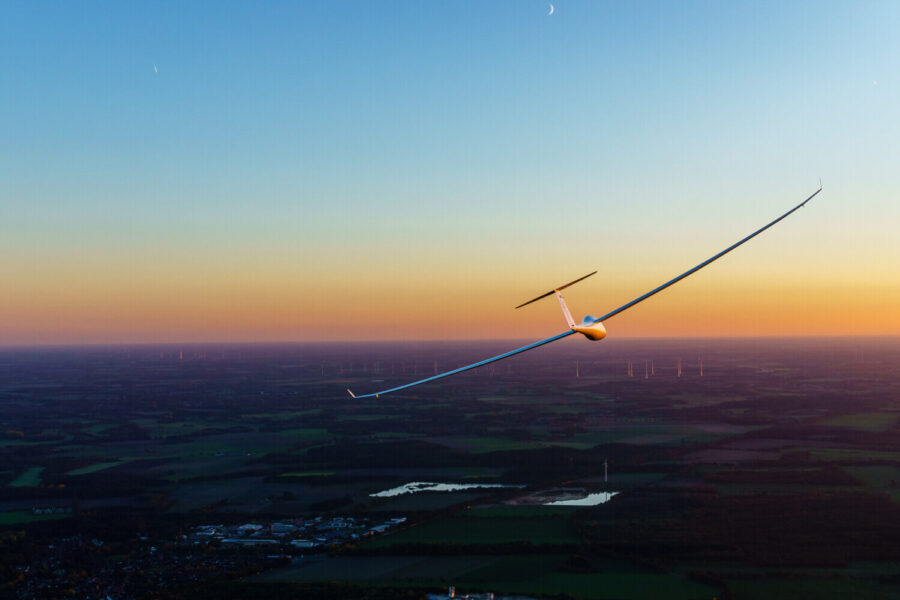

Gliders or sailplanes are light aircraft without engines or any form of thrust, designed for a long soaring flight over relatively long distances. Gliders are a cost-effective way to enjoy the beauty of flight, and a great way to start an exciting career in aviation. Due to the lack of an engine, gliders are launched into the air by a winch or towed by another aircraft (the towplane).
The words sailplane and glider are often used synonymously, but they do have a somewhat different meanings. Gliders are all airplanes without an engine, they do not necessarily need to maintain altitude or even climb, all they need is a way to get off the ground. Sailplanes are those gliders that are aerodynamically optimized for sustained flight using rising air currents. So, all sailplanes are gliders, but not all gliders are sailplanes.
A typical question curious observers ask is how gliders fly without an engine. Well, gliders ride on thermal currents (pockets of hot air with a higher buoyancy than the surrounding atmosphere). Their high aspect ratio wings are designed to take advantage of thermals or orographic lift to climb high altitudes.
Examples of standard gliders include:
- Schempp-Hirth Arcus (two-seater glider)
- Schleicher ASG 29
- Schweizer SGS 2-33
#2. Ultralight Airplanes
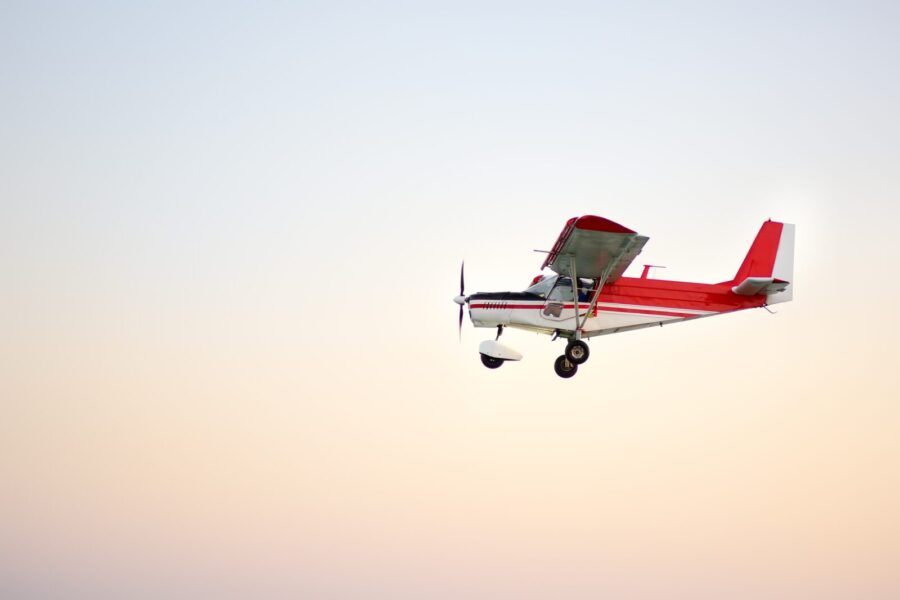

As the name suggests, ultralight airplanes are very light and simple types of aircraft. The main features of an ultralight airplane depend on the US legal requirements for the category it belongs to. Ultralights do not have a standard definition, but they normally include weight restrictions and low-powered engines.
Some countries distinguish between weight-shift control and conventional three-axis control planes with ailerons, elevator, and rudder, labeling the former “microlight” and the latter “ultralight.”
Many countries do not consider ultralight airplane types as conventional aircraft, and as such, they are restricted from flying over populated areas, flying at night, or carrying more than 2 occupants.
Examples of famous ultralight aircraft include:
- Zenair CH701
- Kolb Firestar
- Aerolite 103
- Thunder Gull 2000
Find out more popular ultralight aircraft here:
#3. Unmanned Aerial Vehicles (UAV)
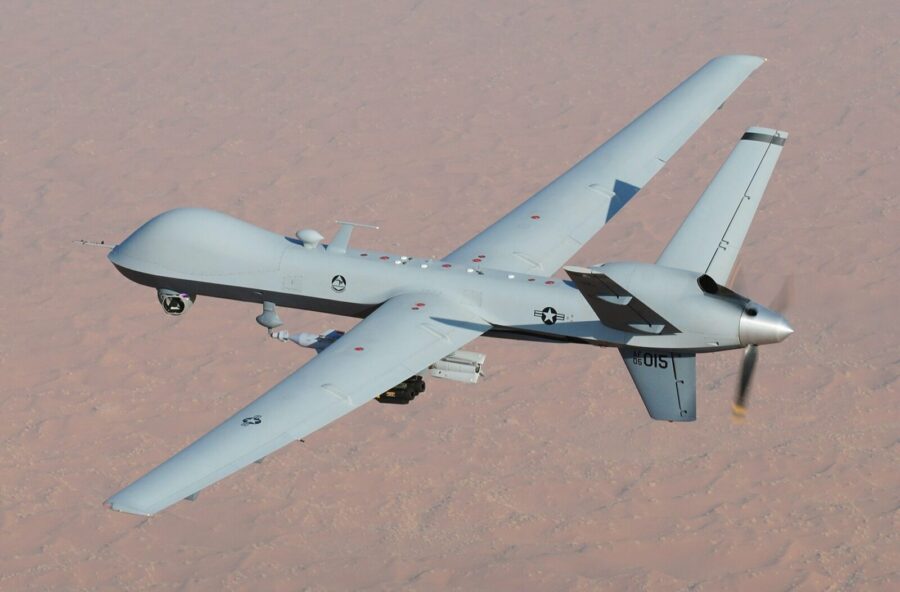

MQ-9 Reaper unmanned aerial vehicle – Photo by Lt. Col. Leslie Pratt
UAVs, or drones, are types of aircraft ranging from the $24 quadcopters flying around your backyard to the sophisticated military drones worth several millions of dollars. Drones do not have an onboard pilot controlling the aircraft during flight. Instead, they are remotely piloted from a controller or station on the ground or in the air from an airplane.
Drones are aircraft types used for a wide variety of purposes. The most common is shooting aerial pictures and videos, policing, land surveys, meteorological and agricultural research. The military also makes extensive use of drones for reconnaissance and attack missions. The General Atomics MQ-1 Predator is a missile-armed attack drone operated by the United States Air Force.
Examples of popular UAVs include:
- Aero Telemetry H-4 Hercules (commercial filmmaking drone)
- Alliant RQ-6 Outrider (military reconnaissance unmanned aerial vehicle)
- General Atomics MQ-9 Reaper (military reconnaissance and air attack UAV)
- Lockheed Martin P-175 Polecat (research drone)
- DJI drones, such as the DJI Phantom, DJI Mavic and DJI Inspire
#4. Amphibious/Float Airplanes
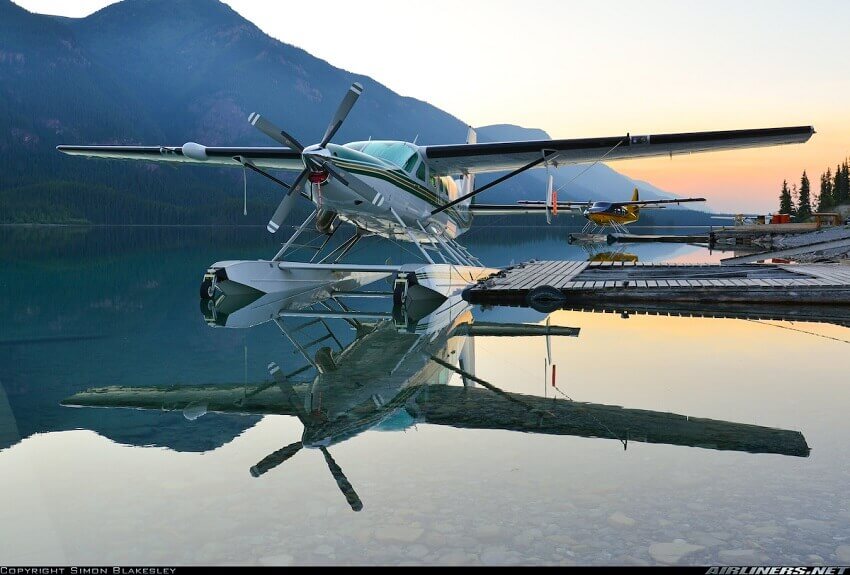

Amphibious airplanes are mostly propeller or turboprop planes designed to land both on water and solid ground, thanks to retractable wheels installed inside their pontoons or fusulage.
Amphibious plane owners use them for pleasure and commercial flight operations. They are often used to ferry passengers to seaside and lakeside resorts and destinations with no airfields. Amphibious aircraft provide a vital lifeline to remote locations delivering essential cargo and personnel to isolated communities.
Popular types of amphibious planes include:
- Pilatus PC-6
- Viking Twin Otter 400S
- Cessna 208 Caravan
- SEAMAX M-22
Flying a floatplane is also on our aviation bucket list!
#5. Piston Airplanes
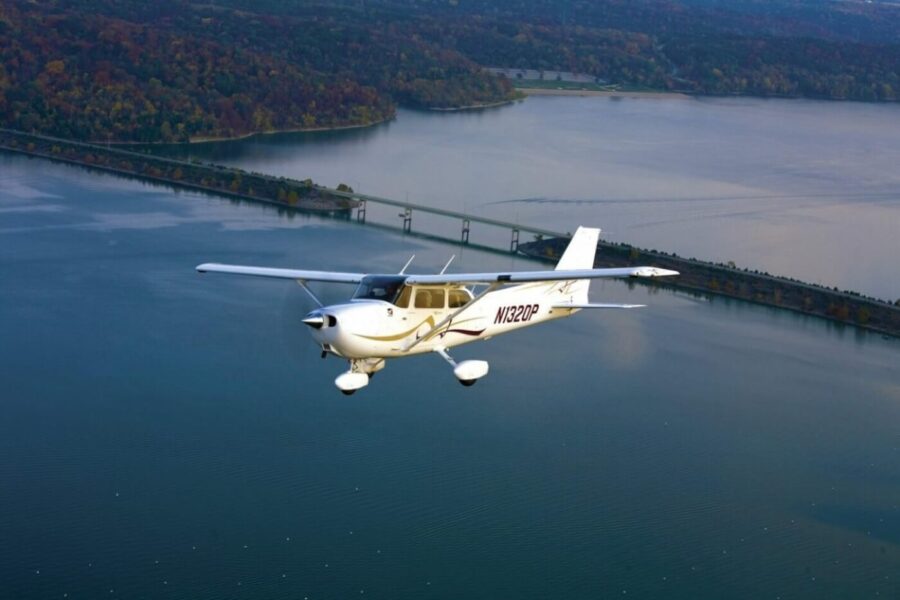

Piston-engine airplanes are usually smaller aircraft powered by single or twin-piston engines. A common sight at smaller airports, they typically carry between 2-6 passengers and are used for a large variety of operations, including flight training, search and rescue, law enforcement operations, medical relief, evacuation, fire fighting, and others.
Because of their good power-to-weight ratio, they are often used for off-airport operations as well. In several countries, piston engine types of aircraft operate as bush airplanes providing cargo and passenger flight services to isolated and sparsely populated places in Africa, the Amazon rainforest, the Alaskan tundra, and the Australian Outback.
Piston-engine airplanes are an inexpensive way of getting into the airplane ownership club. They are cheaper than turboprop and jet aircraft, with meager maintenance costs.
Popular examples of piston engine airplane types include:
- Cirrus SR-22
- Cessna 172 Skyhawk
- Cessna 206
- Bonanza A/G36
- Piper Archer


Recommended
The 11 Best Bush Planes of all Times
#6. Turboprop Airplanes
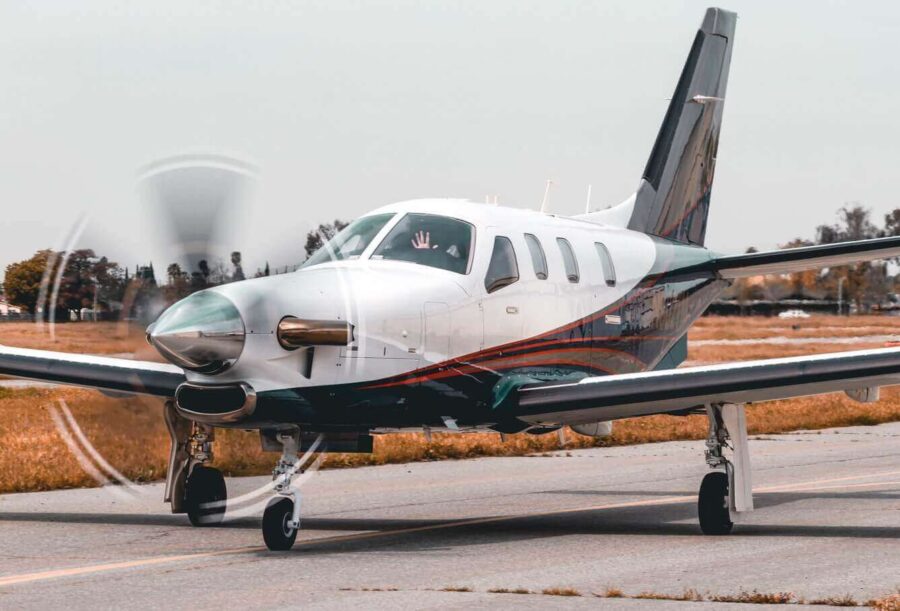

By Chris Leipelt
Turboprop airplane types are single or twin-propeller aircraft with a gas turbine engine similar in design to a jet engine. But instead of using exhaust gas for thrust, a shaft connects the engine to a gearbox which turns a variable-pitch propeller providing the aircraft with thrust. Turboprop planes have average top speeds of around 460 mph (740 km/h), and they fly at altitudes of 35,000 feet with 600 to 1,000 miles range.
Turboprop aircraft are the mainstay of the general aviation industry, despite the popularity of jet aircraft types. In many places, they are the most common aircraft types flying in and out of airports. Turboprop planes are highly versatile due to their powerful engines and low operating costs. They range from single-engine aircraft carrying 1-6 passengers to twin-engined commuter airliners carrying 50-100 passengers.
Perhaps the most significant advantage of turboprop airplanes is their maneuverability and durability. They offer better performance at low altitudes than jet planes and can land on shorter and/or makeshift runways. Military turboprop cargo transport and training aircraft are still in operation in several countries around the globe.
Examples of popular turboprop aircraft types include:
- Lockheed C-130 Hercules (military transport aircraft)
- Airbus A400 Atlas (military transport aircraft)
- Embraer Super Tucano (ground attack fighter plane)
- Pilatus PC-12 (single-engine turboprop)
- Bombardier Q400 (commercial passenger airliner)
#7. Aerobatic Airplanes


Aerobatic airplane types, also known as air racers or stunt planes, are specifically designed for complex and hazardous aerial maneuvers. They consist of a single or two-seat, single-engine piston or turboprop aircraft capable of high speeds.
Aerobatic planes offer fighter jet-level performance, and they are a favorite of retired air force pilots. Aerobatic airplane pilots are often highly skilled. They can safely maneuver their lightweight stunt planes at high speeds while performing complicated dives, rolls, and intricately choreographed flight drills.
Common aerobatic airplanes include:
- Zivko Edge 540
- Extra 330 SC
- MX Aircraft MX2
- Sukhoi SU-29
- Pitts S1
#8. Widebody Commercial Airplanes
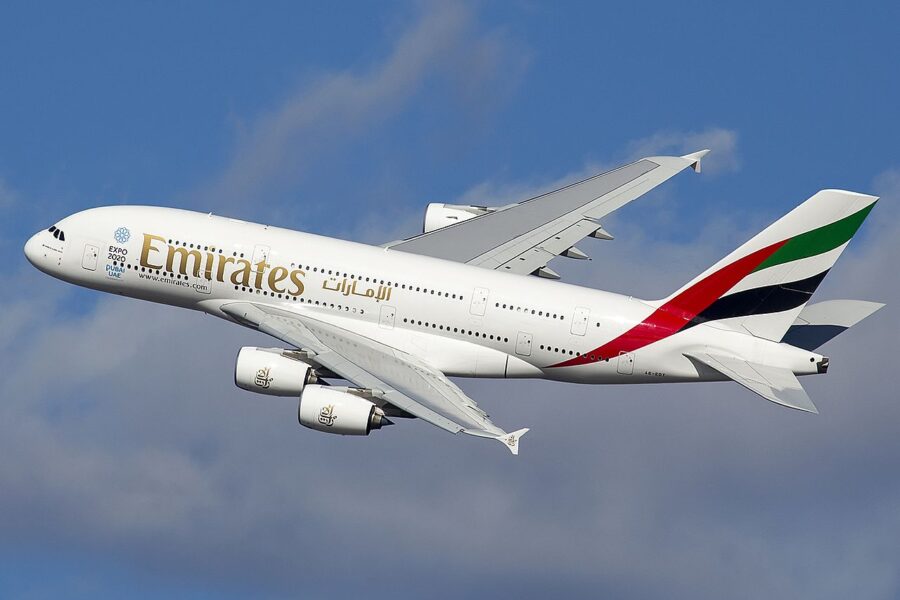

By Maarten Visser
Widebody commercial airliners are the massive airplane types the size of shopping malls. These types of aircraft have a diameter of over 6 meters (20 feet) with a passenger capacity of 200 to 850 in a 10-abreast (3-4-3) or 11-abreast (3-5-3) multiple aisle cabin seating. They are powered by highly efficient jet engines generating several thousands of pounds in thrust. Typically used for long haul flights, wide-body commercial airliners can fly at altitudes of around 42,000 feet with a maximum range of 9,700 miles (18,000 km), at a top speed of 659 mph (1060 km/h).
Wide Body commercial aircraft types have three passenger cabin classes: first-class, business, and economy. And their prices range from the most expensive (first class) to the cheapest (economy class). Some wide-body aircraft have upper deck seating for passengers and spare space for cargo, flight crew quarters, and toilets.
Common wide-body aircraft types include:
- Boeing 747 (jumbo jet)
- Airbus A380
- Boeing 787 Dreamliner
- Boeing 777
- Airbus A340
#9. Narrow-Body Commercial Airplanes
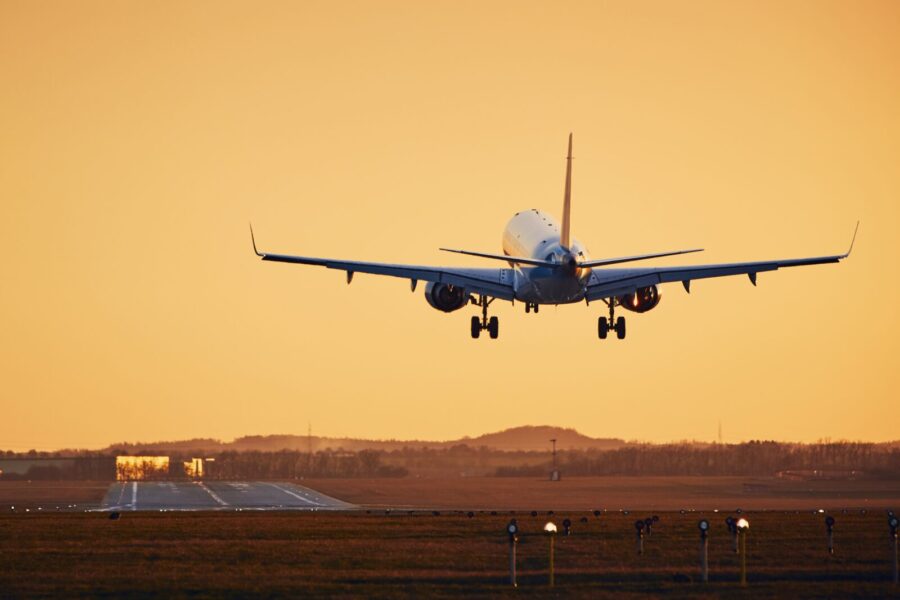

Narrow-body passenger airplanes are the most common commercial aircraft types in the passenger air travel industry. Narrow-body commercial airliners are airplanes with a diameter of fewer than 4 meters (13 feet). These aircraft types are typically twin-engine jet or turboprop aircraft with a 100 to 200-passenger capacity in 6-abreast (3-3) or 4-abreast (2-2) single-aisle cabin seating. They often operate short-haul domestic routes between small cities or large to small towns. However, increasing numbers of jet engine narrow-body commercial airliners fly long haul routes.
Narrow-body commercial airplanes are designed to have lower operating costs, allowing higher revenue per available seat mile for the aircraft. Passengers can choose between two separate cabin classes, business class and economy. Small narrow-body passenger aircraft operated by regional airliners like the Dash 8 may have a single cabin class for all passengers. While larger narrow-body passenger airplanes like the Boeing 737 have enough space for cargo hold, toilets, and crew quarters.
Popular types of narrow-body commercial aircraft include:
- Airbus A320
- Dornier 328
- Boeing 757
- Airbus A220
#11. Cargo Airplanes
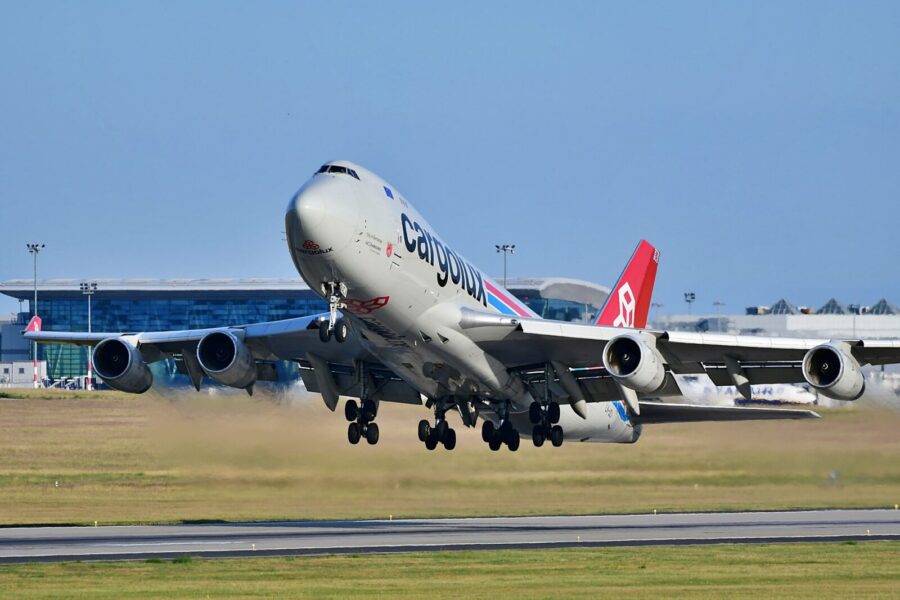

Cargo airplanes also called freighters, or airlifters are aircraft designed to carry goods instead of passengers.
Outsized cargo aircraft like the Boeing Dreamlifter, a modified Boeing 747-400 airliner, was designed to carry airplane parts and has a cargo volume of 65,000 cubic feet (1,840 m³).
Passenger airliners can also convert conventional planes into cargo airplanes by removing seats and other passenger conveniences and installing cargo bays. Cargo aircraft types can be operated by a traditional airline or a company specializing in moving air freight. Military cargo airplanes used by the armed forces are purpose-built cargo aircraft designed with superior performance capabilities.
Examples of famous cargo airplanes include:
- Aero Spaceliners Super Guppy
- Airbus A300-600ST Super Transporter (Beluga)
- Antonov An-225
- Boeing 747 Freighter
#12. Light Jet Airplanes
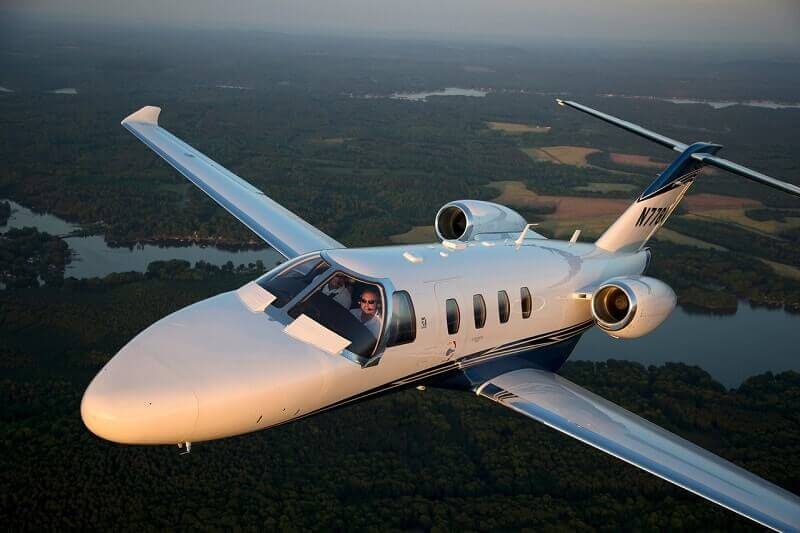

Cessna Citation M2 © Jessica Ambats
Light jets consist of small aircraft types with an average range of some 1,150 miles (1,850 km), with 6 to 8 passengers. Light jets like the Cessna Citation are certified by the FAA for commercial passenger service in the United States operating within smaller airports.
Very Light Jets are an extreme example of light jets. These entry-level business jet aircraft types are also known as personal jets, can seat up to 6 people and can be flown by one pilot. Very Light Jets (VLJ) are the smallest airplane types approved for passenger service with a Maximum Take-Off Weight (MTOW) of below 10,000 pounds (4,540 kg). These types of jets have a short operating range, typically between 500 to 1,000 miles (804 to 1,609), and an altitude ceiling of 31,000, ideal for short flights. Examples of very light jets are the Embraer Phenom 100 and Cessna Citation Mustang.
Although they are comfortable, light jets often lack basic comforts like toilets and extra legroom due to limited space.
Common examples of light jets include:
- Cessna Citation jet
- Learjet 40
- Embraer Phenom 100
- Cirrus Vision SF50
- Honda Jet HA-420
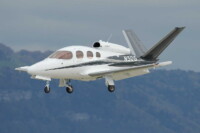

Recommended
10 of the Most Affordable Private Jets
#13. Mid-Size Jets
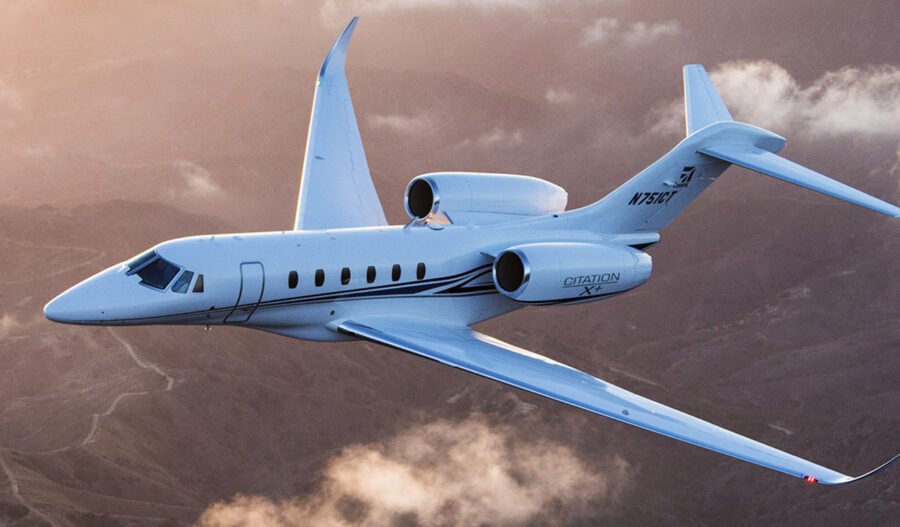

Mid-size private jets are ideal for the typical millionaires – or the occasional billionaire fancying extra legroom, a plusher cabin, and an extended range. They offer significantly more space than light private jets with several passenger amenities such as a private toilet, bar, and in-flight entertainment. Private jets like the Cessna Citation XLS are an excellent example of a mid-size private jet with a seating capacity of 9 – 12 passengers and a range of 2,100 miles (3,400 km).
Common types of mid-size jets include:
- Hawker 800
- Learjet 60
- Embraer Legacy 450
#14. Large Jets


Photo by Gulfstream
Large jets are airplane types designed to combine high altitude flight, speed, and extended range with a sleek wide-body fuselage accommodating 19 passengers. They offer higher levels of luxury and passenger amenities than mid-size jets. Large jets are considered billionaires’ toys because of their high prices. One of the most popular large jets, the Gulfstream G650, comes with a $65 million tag. However, you get an airplane capable of transatlantic flight and luxury features commonly seen on 5-star hotel suites.
Popular large jets include:
- Dassault Falcon 7X
- Bombardier Challenger 600
- Embraer Legacy 600
- Gulfstream G500/G550
#15. Heavy Business Jets
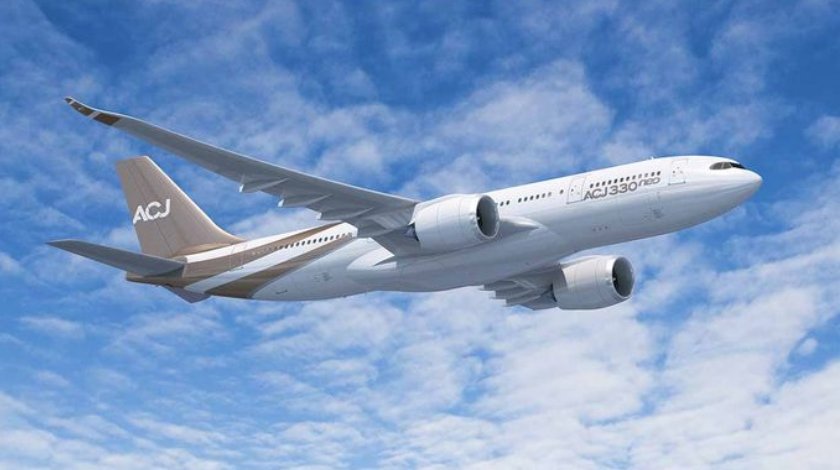

If you desire to take your home and office with you into the air whenever you fly – and you can afford to. Then the heavy business jet airplane type is right up your alley. Business jets are typically conversions of wide or narrow-body airliners equipped with bedrooms, offices, a conference room, and anything you can think of to make your flight comfortable and productive. These are flying castles with every convenience you can dream about.
Users of business jets include sports teams, entrepreneurs, company CEOs, movie stars, government leaders, or VIPs with a large entourage. Business jets manufactured for state and government officials may have additional security features.
Examples of heavy business jets include:
- Boeing Business Jet (BBJ)
- Airbus Corporate Jet (ACJ)
#16. Fighter Airplanes


By Tech. Sgt. Brad Fallin, U.S. Air Force
Fighter planes are the most recognizable and fast military aircraft types, often flying at speeds exceeding Mach 2. These are airplanes designed to provide air superiority over a country’s sovereign territory protecting enemy planes and bombers from attacks. Fighter aircraft are available in several variants ranging from interceptor fighter aircraft, fighter bomber aircraft, interdiction fighter planes, and air superiority fighters. Some fighter planes are multi-role, meaning they can perform all the different functions.
Air Force fighter airplanes have come a long way since WW2 fighter planes like the P-51 Mustang..
Popular types of fighter planes include:
- Lockheed Martin F-22 Raptor (United States)
- MIG-25 Foxbat (Soviet Union/Russia)
- Sukhoi SU-27 (Russia)
- Eurofighter Typhoon (Europe)
- Mcdonnell Douglas F-15 Eagle (United States)
Read more about the fastest military fighter jets here:


Recommended
The 11 Best Russian Fighter Jets of All Times
#17. Bomber Aircraft
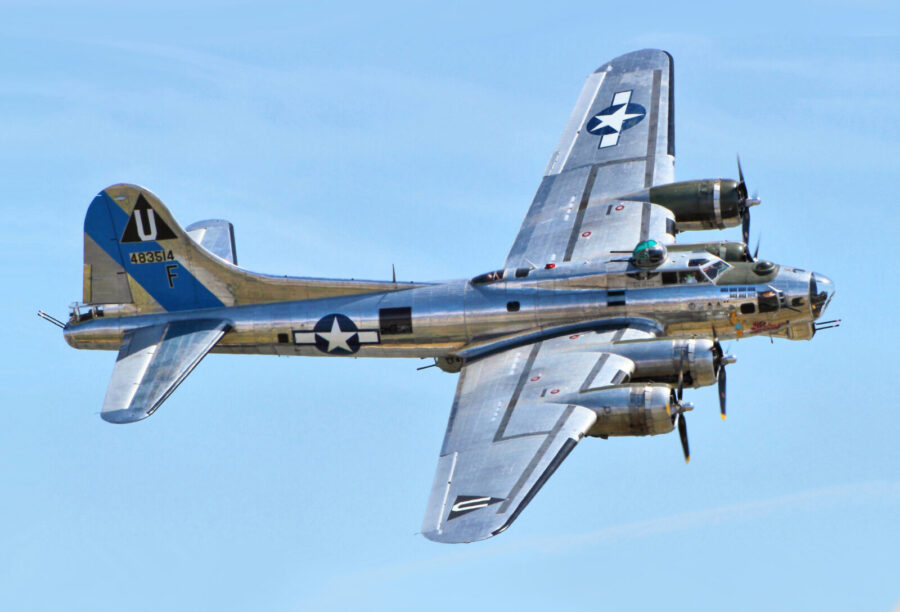

Photo by Wikipedia user Airwolfhound
Bombers are large military airplane types designed for a long-range offensive into enemy territory. Bombers drop air to ground weaponry intended to explode on or before impact over enemy territory. And they carry a large number of guided bombs and missiles to achieve their missions. Modern bombers are equipped with advanced technology to avoid detection by enemy radar. An example is the B-2 Spirit, a stealth-heavy strategic bomber in service with the United States Airforce.
There are different bomber aircraft types: heavy bombers, medium bombers, lights bombers, dive bombers, and torpedo bombers. However, the last two types of bombers are no longer in production. A minimum of four engines powers heavy bombers. However, aircraft such as the B-52 Stratofortress are fitted with eight engines. A bomber payload can range from conventional bombs to nuclear weapons.
Examples of famous bombers include
- North American XB-70 Valkyrie strategic nuclear bomber (United States)
- Tupolev Tu-160 Blackjack (Soviet Union)
- Avro Vulcan (United Kingdom)
- Boeing B-29 Superfortress (United States)
Read more about the greatest WW2 American bombers here:
#18. Military Transport Airplanes
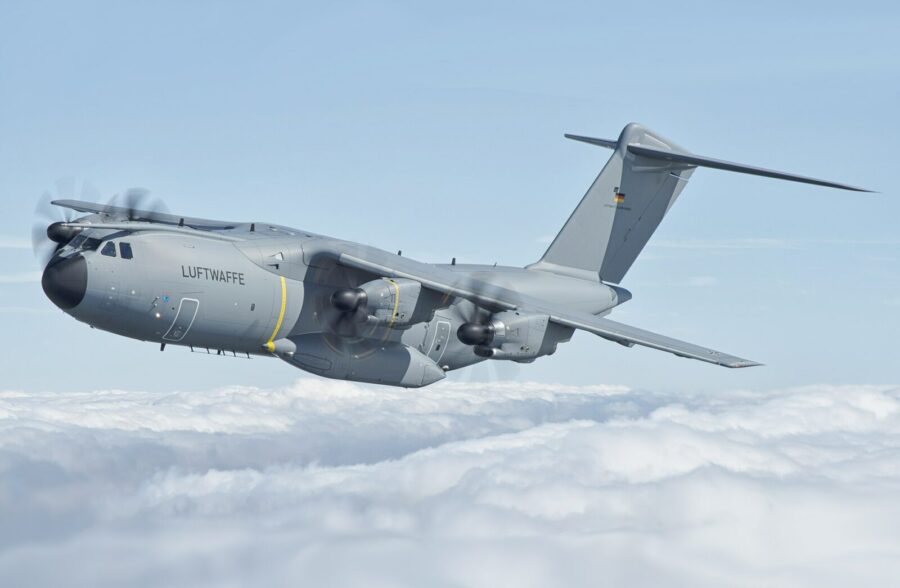

By Peng Chen
Military transport aircraft are large to small size airplane types designed to perform a variety of roles ranging from cargo airlift, troop transport, and medevac operations. They could be jet or turboprop engine aircraft with exceptional performance capabilities like steep climb or dive, short take-off and landing, and the ability to land on unprepared surfaces.
Most military transport planes have a large cargo ramp for loading and unloading cargo, including cargo airdrops.
Popular military transport airplanes include:
- Lockheed C-5 Galaxy (United States)
- Boeing C-17 Globemaster III (United States)
- Airbus A400 M Atlas (Europe)
- Antonov An-124 Ruslan (Soviet Union)
Conclusion
Whether wide-body airliners or single-engine light aircraft, airplanes continue to be technological works of art. And knowing the different planes and their purpose helps you understand the reason for their creation. The story of airplanes is constantly evolving, and every year brings breakthroughs in engine and airframe design, enabling planes to fly faster and operate more efficiently.




















